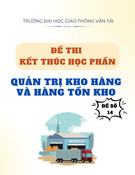
FTU Working Paper Series, Vol. 2 No. 5 (07/2024) | 1
XÂY DỰNG KHUNG LÝ THUYẾT VỀ ẢNH HƯỞNG CỦA NHẬN THỨC VỀ
QUỐC GIA XUẤT KHẨU LÊN MỨC ĐỘ SẴN SÀNG MUA TRÁI CÂY XUẤT
KHẨU CỦA KHÁCH HÀNG TẠI CÁC THÀNH PHỐ LỚN Ở VIỆT NAM
Ninh Thị Mai Anh
1
, Đỗ Minh Anh, Vũ Quỳnh Anh, Vũ Hoa Nguyệt Minh,
Nguyễn Thủy Tiên
Sinh viên K61 Kinh doanh quốc tế – Khoa Kinh doanh quốc tế
Trường Đại học Ngoại thương, Hà Nội, Việt Nam
Nguyễn Thị Hồng Hạnh
Giảng viên Viện Kinh tế và Kinh doanh quốc tế
Trường Đại học Ngoại thương, Hà Nội, Việt Nam
Tóm tắt
Nghiên cứu khám phá về vai trò quan trọng của hình ảnh nước xuất khẩu và ảnh hưởng của nó đối
với sự tin tưởng của người tiêu dùng về chất lượng và an toàn thực phẩm trong thị trường trái cây
tươi ở Việt Nam. Nghiên cứu cũng khám phá cách những quan điểm này tác động đến mức độ sẵn
sàng chi trả của người tiêu dùng đối với trái cây nhập khẩu. Phương pháp nghiên cứu sử dụng khảo
sát để thu thập dữ liệu, nhằm phân tích cách người tiêu dùng Việt Nam nhận thức ba yếu tố của
“Khung hình ảnh quốc gia” đối với sáu quốc gia xuất khẩu và đánh giá sự tin tưởng và khả năng
mua sắm trái cây tươi từ những quốc gia này. Kết quả của nghiên cứu là đề xuất ra một khung hình
ảnh quốc gia đầy đủ, mở rộng hơn so với mô hình hiện có, tập trung vào các đặc điểm con người
như năng lực quốc gia và mức độ thân thiện. Những bổ sung của bài nghiên cứu đã tích hợp cả các
đặc điểm môi trường, đặc biệt là “hình ảnh xanh sạch,” để đánh giá tác động của nó đối với mức
độ sẵn sàng chi trả của người tiêu dùng Việt Nam cho trái cây tươi từ nước ngoài. Mặc dù nghiên
cứu thừa nhận một số hạn chế, tính mới của nó nằm ở việc đề xuất một khung hình ảnh quốc gia
độc đáo, được thiết kế xét theo xu hướng của người tiêu dùng Việt Nam đối với việc mua trái cây
1
Tác giả liên hệ, Email: k61.2212550004@ftu.edu.vn
Working Paper 2024.2.5.15
- Vol 2, No 5

FTU Working Paper Series, Vol. 2 No. 5 (07/2024) | 2
tươi nhập khẩu, từ đó gia tăng hiểu biết về hành vi của người tiêu dùng trong ngữ cảnh thị trường
Việt Nam.
Từ khóa: Hình ảnh quốc gia xuất xứ, Stereotype content model, mức độ sẵn sàng chi trả, trái cây,
Việt Nam.
THE IMPACT OF COUNTRY OF ORIGIN ON THE CUSTOMERS’
WILLINGNESS TO BUY EXPORTED FRESH FRUIT IN VIETNAM’S
METROPOLISES: A CONCEPTUAL FRAMEWORK
Abstract
This conceptual paper delves into the pivotal role of the exporting country’s image and its
influence on consumer trust regarding food quality and safety within Vietnam’s fruit market. It
further explores how these perceptions shape the consumers’ propensity to purchase imported
fresh fruits. The research employs a survey methodology to gather data, aiming to dissect how
Vietnamese consumers perceive three elements of the “Country image framework” for six
exporting nations, and to assess their trust and willingness to engage in purchasing fresh fruits
from these countries. The findings introduce an innovative theoretical Country image framework,
which expands upon the existing Stereotype content model that traditionally emphasizes human
traits such as competence and warmth. This enhancement integrates environmental attributes,
specifically the ‘clean green image,’ to evaluate its effect on Vietnamese consumers’ readiness to
buy fresh fruit from abroad. While the research acknowledges certain limitations, its originality
lies in proposing a unique Country image framework tailored to scrutinize the inclination of
Vietnamese consumers towards buying imported fresh fruits, thereby adding value to the
understanding of consumer behavior in Vietnam’s market context.
Keywords: Country of origin, Stereotype content model, Willingness to buy, fruit, Vietnam
1. Introduction
Country of Origin (COO) constitutes a vital external signal that directs consumers' product
assessment, especially in situations of information scarcity (Bilkey & Nes, 1982). The impact of
COO pertains to consumers' cognitive processes, emotional states, inclinations, and consumption
actions (Verlegh & Steenkamp, 1999), with varying effects contingent on factors such as product
category, country image, and consumer characteristics (Liefeld, 2004).
The association between Country of Origin (COO) and consumers’ willingness to buy (WTB)
has been investigated for several decades with numerous findings indicating the significant
influences of COO on WTB. Studies have documented that negative views of a country, emanating
from past military, economic, or political conflicts, negatively affect consumers’ willingness to
buy a country’s products (e.g. Nijssen & Douglas, 2004; Riefler & Diamantopoulos, 2007).
Touzani et al. (2015) argue that, in emerging markets, COO is a major determinant of consumers’
preference for foreign products, as it reflects various factors such as economic development,
cultural exposure, and historical ties. As an emerging market, Vietnam may also exhibit a similar

FTU Working Paper Series, Vol. 2 No. 5 (07/2024) | 3
pattern of COO influence on consumers’ WTB. Despite the importance of COO in influencing
consumer behavior, this topic has received limited attention in the Vietnamese context. Therefore,
it is essential to investigate the impact of COO on Vietnamese consumers’ WTB.
The COVID-19 pandemic has triggered a noticeable shift in global consumer behavior
towards health-conscious lifestyles and dietary patterns. In the post-pandemic era, fresh food has
emerged as a prominent choice among nutrition options (Alonso et al., 2021), especially, fruit
consumption is regarded as a beneficial dietary habit since it helps in the prevention of various
non-communicable diseases, such as cardiovascular disease, neurological disease, obesity,
diabetes mellitus, osteoarthritis, and some cancers (P. Jaglan et al., 2022). The Vietnam Times
reports that the demand for healthy food has been on the rise for several years, following the
“clean-eating” movement in Western European countries and America, as well as the macrobiotic
diets in Asian countries. However, the COVID-19 pandemic has further accelerated this trend, as
many consumers have realized the importance of adopting a healthy lifestyle and consuming
healthy products. Additionally, a 2022 survey of Decision Lab about lifestyle changes, especially
in the eating habits of Vietnamese consumers since the pandemic reveals that 46.3% of the
respondents expressed interest in changing their eating habits and 43.4% of them claimed to have
improved their knowledge of healthy food. This nuanced shift in consumer behavior reflects a
growing commitment to health and well-being in the post COVID-19 pandemic context, with fresh
fruit becoming more popular among consumers for its positive effects on human health.
In this research, we concentrate on the fruit industry in Vietnam, one of the world's largest
fruit producers and exporters, with a total fruit area of 1.1 million hectares and a production of
12.8 million tons in 2019 (GSO, 2020). Vietnam’s fruit market has seen considerable growth in
size and revenue in recent years. According to Statista, the fruit market is expected to grow
annually by 7.86% (CAGR 2023-2028). Besides, Vietnam also imports a large amount of fruit
from other countries, such as China, Thailand, Australia, and the US, to meet the domestic demand
and diversify the fruit supply (VASEP, 2020). The Vietnamese fruit market is thus characterized
by high competition and diversity, which poses challenges and opportunities for domestic and
foreign stakeholders in the fruit market. We decided to narrow down our scope of research and
focus only on matters that are relevant and suitable for Vietnam’s context: fruits imported from
the 6 countries that Vietnam imports the largest: China, the USA, Australia, Thailand, Korea, and
New Zealand. Given the importance of COO impacts on consumers’ WTB as well as the changing
consumption habits towards fresh food, we attempt to examine this relationship in the Post
COVID-19 situation in the Vietnam fruit market. Based on our findings, we provide practical
implications and recommendations for fruit producers, exporters, importers, retailers, government,
and policymakers on leveraging COO as a marketing tool and regulating the fruit market
effectively and efficiently.
All the objectives mentioned above led us to the following research questions:
● RQ1: How does the COO affect Vietnamese consumers’ WTB?

FTU Working Paper Series, Vol. 2 No. 5 (07/2024) | 4
● RQ2: What is the relationship between COO and Vietnamese consumers’ WTB in
Post COVID-19?
2. Literature review
2.1. Trust in quality and safety of fresh fruit and its effect on consumers’ willingness to buy
In recent decades, the demand for high-quality and safe food has been on the rise, partly
because contemporary consumers have become highly demanding, fragmented, and
knowledgeable, paying increased attention to the quality and health-related values of the food
they eat (Petrescu et al., 2019; Kealesitse & Kabama, 2012; Gjerris et al., 2015). Extensive
research demonstrated that overall food quality and food safety are driving forces for consumers’
levels of trust in food, including trust in producers, suppliers, and the economic development
level of producing nations (Taylor et al., 2011; Petrescu et al., 2019). Prior findings suggest that
consumers’ confidence in food can be seen as a promoter of their purchase behaviors, while a
lack of trust may be an obstacle to them (Canova et al., 2020; Hansen et al., 2018). Necessarily,
trust is instrumental in the decision-making process when consumers assume that food is organic,
natural, healthy, tasty, and safe (Canova et al., 2020).
Within the food industry, in recent decades, numerous academic efforts have been put into
defining and conceptualizing the term “quality” in food (Grunert, 2005; Kahl et al., 2012).
Generally, consumers’ evaluation of food quality can be categorized into two main dimensions:
tangible sensory attributes and less tangible credence attributes (Wu et al., 2021). The former
refers to the physical and sensory characteristics of food, namely taste, flavor, freshness,
juiciness, and appearance (Wu et al., 2021; Grunert, 2005; Petrescu et al., 2019). The latter
covers a wide range of implicit cues such as nutritional and functional benefits, convenience,
together with ethical and environmental concerns (Naspetti & Zanoli, 2009; Wu et al., 2021;
Kealesitse & Kabama, 2012). Regarding fruit quality, a handful of prior studies have stated that
appearance and taste are dominant indicators that influence consumers’ assessment of fruit
quality (Rohr et al., 2005; Feng et al., 2021; Naspetti & Zanoli, 2009). Visual appearance, such
as the intensity and color of fruit skin or fruit size, is of utmost importance in the quality grading
of fruits, which is also proven to affect both consumers’ acceptance to purchase a greater quantity
and sales (Iglésias et al., 2008; Crassweller and Hollender, 1989). Previous findings have also
indicated that, besides appearance, taste, as an eating quality, is the most important parameter
influencing consumers’ purchase decisions of apples (Iglésias et al., 2008; Harker, 2001; Donati
et al., 2003).
The perception of food by consumers is greatly influenced not just by the quality of food,
but also by the safety concept associated with it (Van Rijswijk & Frewer, 2008). Food safety can
be characterized by a confined or broader approach (Ritson & Mai, 1998). The more narrow
sense defined food safety as the opposite of food risk, in other words, the probability of not being
subjected to any harm from consuming certain food (Henson & Traill, 1993). The broad

FTU Working Paper Series, Vol. 2 No. 5 (07/2024) | 5
interpretation of food safety not only covers the more confined definition but also includes the
nutritional qualities of food and more concerns about the attributes of unfamiliar foods (Ritson &
Mai, 1998).
According to the Foodborne Disease Burden Epidemiology Reference Group (FERG)
published by the World Health Organization (WHO) in 2010, the worldwide impact of
Foodborne Diseases (FBD) is comparable to major pandemics such as HIV/AIDS, tuberculosis,
and malaria. The global impact of Foodborne Diseases (FBD), attributed to the 31 hazards,
resulted in 33 million Disability Adjusted Life Years (DALYs) with the most substantial burden
experienced by African regions, followed by Southeast Asian regions (Havelaar et al., 2015).
Consequently, ensuring the safety of food has been an essential part of securing food for billions
of individuals in developing and emerging nations for decades. (Ortega & Tschirley, 2017).
It has been recognized that the presence of foodborne pathogens and pesticide residues are
two significant problems affecting the safety of fresh fruit and also acting as the criteria for
consumers’ purchasing decisions (Van Boxstael et al., 2013; Yu et al., 2018; Feng et al., 2021).
Fresh fruit, being naturally biological, can foster the proliferation of pathogenic microorganisms,
which can potentially result in foodborne illnesses (Fung et al., 2018). More than 200 different
foodborne diseases identified are induced by species such as Salmonella, Listeria, Escherichia
Coli, etc (Bintsis & Author_Id, 2017). The use of agricultural pesticides has boosted global
agricultural output, thereby aiding in achieving food security (Warren 1998; Fisher et al. 2012).
Despite their benefits, pesticide residues have presented potential threats to food safety, directly
affecting human health (Zhang et al., 2015). Many countries in the world, including Vietnam,
have put into force regulations about maximum levels of residues for pesticides in food (Winter
& Jara, 2015; Vietnam MOH, 2016).
In the current times, customers have become more particular and evaluative, and have
diversified their selections in food (Grunert 2005). They tend to take into consideration food
quality and food safety as two key elements guiding their perceptions and purchase decisions
(Wilcock et al., 2004; Grunert, 2005; Ro¨hr et al., 2005). Even though there was a notable
interrelationship in the consumers’ perceptions of food quality and food safety (Grunert, 2005;
Knight et al, 2008; (Van Rijswijk & Frewer, 2008), most consumers believed that safety is
derived from the definition of food quality (Grunert, 2005), rather than the converse. Rijswijk
and Frewer (2008) noted that for several individuals, safety is considered to be one criterion of
quality assessment, and thus, finding a high-quality product also suggests that it is safe.
Additionally, a study on fresh fruit reveals that consumers associate high-quality fresh fruit with
its safety for consumption and the absence of chemical residues (Chamhuri and Batt, 2015).
According to all the above findings, we hypothesize that:
H1. Consumers’ trust in food safety will be indicated positively by their trust in food quality.
Generally, a large amount of prior literature shows that consumer's perception of food
quality and food safety can be a facilitator for their purchase behaviors of food items, including
imported fresh fruits (Kealesitse & Kabama, 2012; Wang et al., 2020; Yang et al., 2021; Seo et

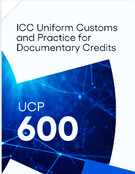
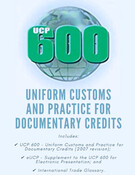
![Đề thi Quản trị Logistics và chuỗi cung ứng quốc tế học kì 2 năm 2024-2025 có đáp án [Mới nhất]](https://cdn.tailieu.vn/images/document/thumbnail/2025/20250915/kimphuong1001/135x160/59591757927414.jpg)
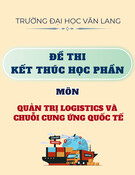

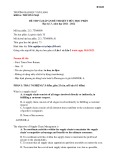

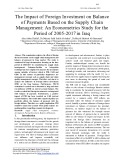

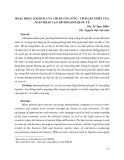






![Đề kiểm tra Quản trị logistics [mới nhất]](https://cdn.tailieu.vn/images/document/thumbnail/2025/20251015/2221002303@sv.ufm.edu.vn/135x160/35151760580355.jpg)
![Bộ câu hỏi thi vấn đáp Quản trị Logistics [năm hiện tại]](https://cdn.tailieu.vn/images/document/thumbnail/2025/20251014/baopn2005@gmail.com/135x160/40361760495274.jpg)





